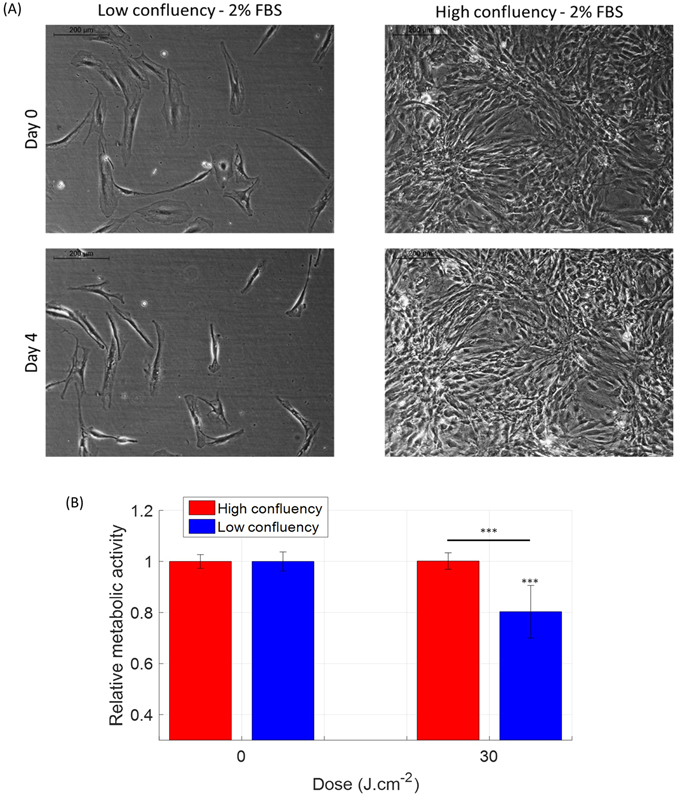Figure 4.

An increase in the cell confluency of human dermal fibroblasts reduces the inhibitory effect of blue light (450 nm) on their metabolic activity. (A) Phase-contrast images of human papillary fibroblasts on day 0 (8 days after seeding) at a low initial confluency (upper left) and high initial confluency (upper right), and after three light treatments on day 4 at a low initial confluency (lower left) and high initial confluency (lower right). Reticular fibroblasts were found to behave similarly (not shown). (B) Relative metabolic activity of human papillary fibroblasts after light treatment at 450 nm, 50 mW.cm−2 with 30 J.cm−2 in function of the confluency level. Statistical analysis was evaluated using student t-tests between the control group and the treated group (N = 3, 2 lineages and 3 replicates), with following thresholds *p < 0.05, **p < 0.01, ***p < 0.001. The control group has an average relative metabolic activity of 1. The significance of the interaction between the radiant exposure and the confluency level was much lower than 0.001.
